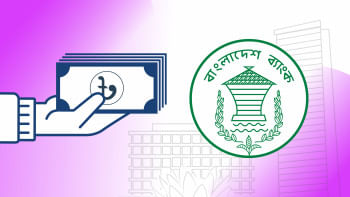Precious yet we pollute

Natural sources of fresh water, especially rivers, are becoming highly contaminated with industrial effluents and human waste, causing serious hazards to public health and ecological system, warn experts.
The rivers around the capital in particular are polluted due to mindless dumping of untreated waste and effluents that contain heavy metals and residues of toxic chemical, they observe.
“As a natural resource, sweet water is as valuable as minerals like coal and natural gas,” Hasin Jahan, policy advocacy director of WaterAid Bangladesh, told The Daily Star.
“The rivers, the prime sources of sweet water, are being contaminated heavily with lethal effluents,” she observed.
Besides, rainwater, the purest form of natural water, is callously wasted by letting it run off and merge with polluted rivers in the absence of a harvesting system, she said.
Of the 80,000 tonnes of human waste generated a day in the country, at best two percent (1,600 tonnes) is treated at Pagla treatment plant near the capital, and the rest eventually ends up in rivers, said Hasin.
Most industries in and around the capital release untreated effluents directly into the Buriganga, Shitalakhya, Balu and Turag rivers, taking advantage of the authorities' lax attitude towards enforcing environmental laws and regulations, she added.
Prof Mujibur Rahman of Bangladesh University of Engineering and Technology said river water is turning unsafe for drinking because of rampant release of untreated human waste and industrial effluents that contain heavy metals like chromium, cadmium, lead and mercury, and toxic chemicals.
More than 300 rivers in Bangladesh are polluted the same way, said Mujibur, who has worked extensively on environmental issues.
Such pollution makes river waters unsuitable for agriculture, fishing, household chores, and bathing. It also ruins the riverine ecological system and biodiversity.
The four rivers around the capital have become virtual dumping grounds for all kinds of solid, liquid and chemical waste, as hundreds of tanneries and textile factories are situated by these water bodies, he observed.
Prof Dr Mohammad Ali, who has carried out the first liver transplant in the country, said excessive accumulation of heavy metals through regular consumption of contaminated food and water might damage brain, liver, kidney and the nerves.
Contaminated water could cause deadly hepatitis-A and E and typhoid, and eventually lead to liver failure, particularly in children and pregnant women, said Prof Ali, also founder secretary general of National Liver Foundation of Bangladesh.
According to the findings of WaterAid Bangladesh, more than 7,000 children under five die from diarrhoea while waterborne diseases cause nearly a quarter of total deaths a year in the country.
Taqsem A Khan, managing director of Dhaka Water Supply and Sewerage Authority (Wasa), said, “Unfortunately, the rivers around Dhaka are so polluted that their water is almost impossible to treat.”
Dhaka Wasa, which serves around 12.5 million people in a 360-square-kilometre area, uses water of only the Shitalakkhya at a pre-treatment and treatment plants at Sayedabad to meet 22 percent of the total demand for 230 crore litres of water. The rest is extracted from underground.
The groundwater table in Dhaka city depletes by around three metres a year with roughly 1.5 metres of annual recharge, according to an official estimate.
Taqsem said replenishment of the groundwater table is obstructed due to unplanned concrete coverage of the surface, and destruction of wetlands, open space and rivers.
Rainwater, which is supposed to recharge the water table, runs off the concrete surface and merge with polluted water of rivers.
Mega projects, including Jasaldia (Mawa) and Gandhabpur (Narayanganj) water treatment plants, have been taken up to bring water from the Padma and the Meghna, from a distance of 33 km and 23 km to supply surface water to the city dwellers, said the Wasa boss.
He said only 20 percent of the population whom the Wasa serves is under sewer coverage.
Those beyond the coverage don't have septic tanks and release human waste directly into the environment through open and storm drains as well as rivers, he added.


 For all latest news, follow The Daily Star's Google News channel.
For all latest news, follow The Daily Star's Google News channel. 




Comments